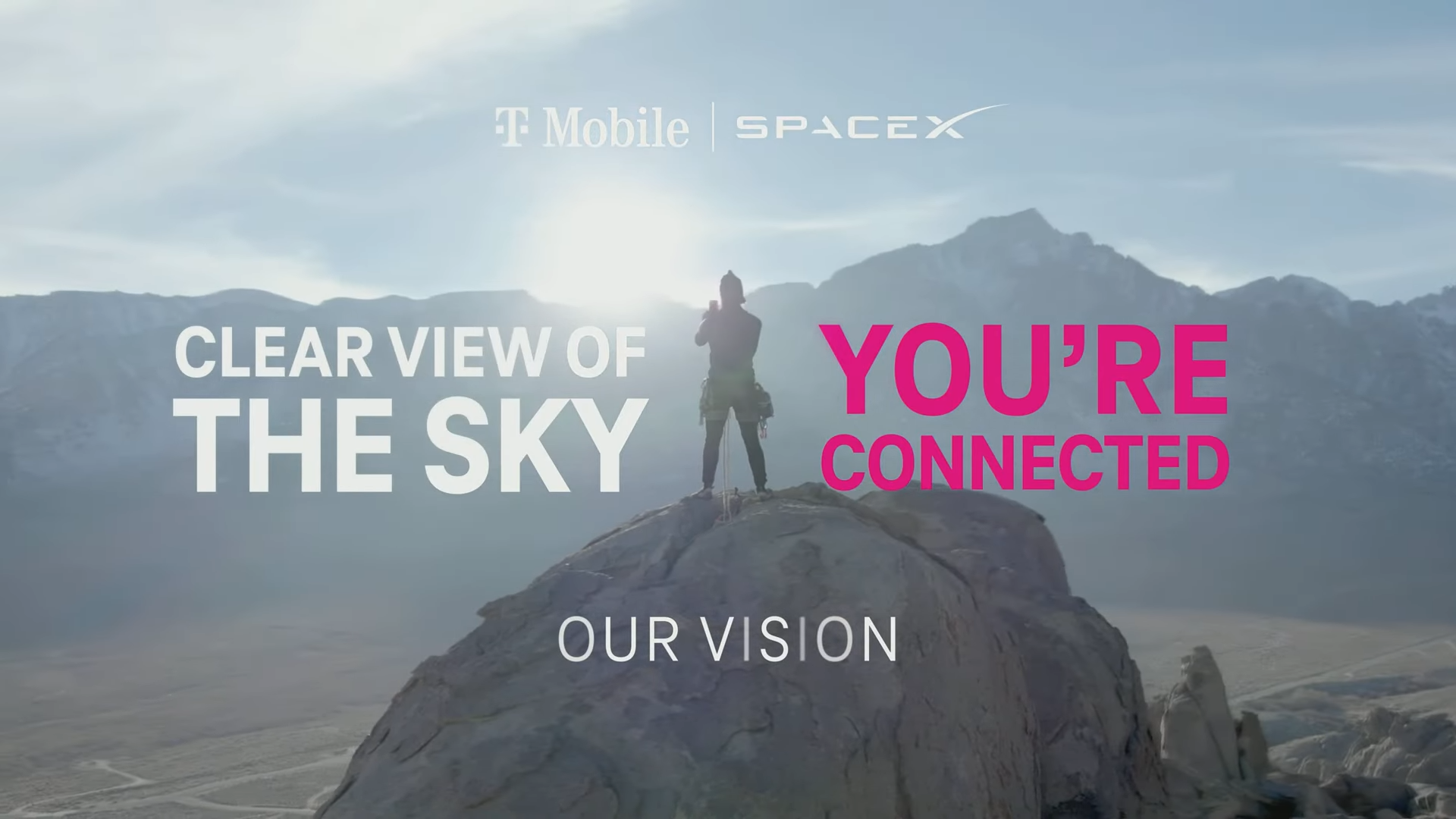Even as cell service keeps evolving, offering faster speeds in more areas across the country, dead zones are far from a thing of the past. Iif anything, they continue to frustrate and confound users, who expect their smartphones to "just work." T-Mobile is teaming up with SpaceX to try and end dead zones for good, but plenty of technical challenges could stand in their way.
The two companies held a livestreamed event last night, hosted by T-Mobile CEO Mike Sievert and, naturally, Elon Musk, where they announced a partnership that would allow the Uncarrier to use next-gen satellites to provide cell coverage across the entire US — even in areas where restrictions prevent traditional towers from functioning. Whether you're an outdoorsy type looking to rely on your smartphone during your next day-long hike or live in a zone where natural disasters like hurricanes can frequently knock out your signal, this news is huge for how we think about network coverage in the US.
Before you go running into the woods, phone in hand and ready to abandon your city-dwelling life, a lot of technical challenges stand in the way of this dream becoming a reality. This network is entirely new, relying on mid-band PCS spectrum, paired with second-gen satellites using new antennas designed to pick up the "quiet" signal smartphones produce. As Musk points out on stage, the distance this signal must travel — in addition to accounting for the movement of the satellite — is a challenge the company needs to tackle to get this working. SpaceX relies on massive antennas to do this, which will also require a new rocket — Starship — to get them into space. Without Starship set to launch, the company would have to rely on smaller versions of its new satellites as a stop-gap measure.
Even once the infrastructure is set in place, there are restrictions. This network isn't intended to support high-speed data — it's designed explicitly for texting and voice calls. T-Mobile stresses it's made for SMS, MMS, and "participating" messaging apps that team up to support this system. As Musk tweeted after the event, data speed would peak at 2 to 4 megabits down.
Still, there's some good news on top of all of these hurdles. T-Mobile says once its new network launches, it'll include it in most subscriber plans for free, and it'll work with existing 5G devices — no upgrade required. For those on excluded plans, the company stresses it hopes to keep add-on costs affordable. There aren't any concrete plans for when this service might be available to every subscriber, though T-Mobile hopes to launch it in beta before the end of 2023. It's also calling on worldwide carriers to join in on the partnership, potentially expanding this satellite network well beyond the Atlantic and Pacific oceans. We'll have to wait to find out whether the two companies can accomplish their lofty goals by next December.

